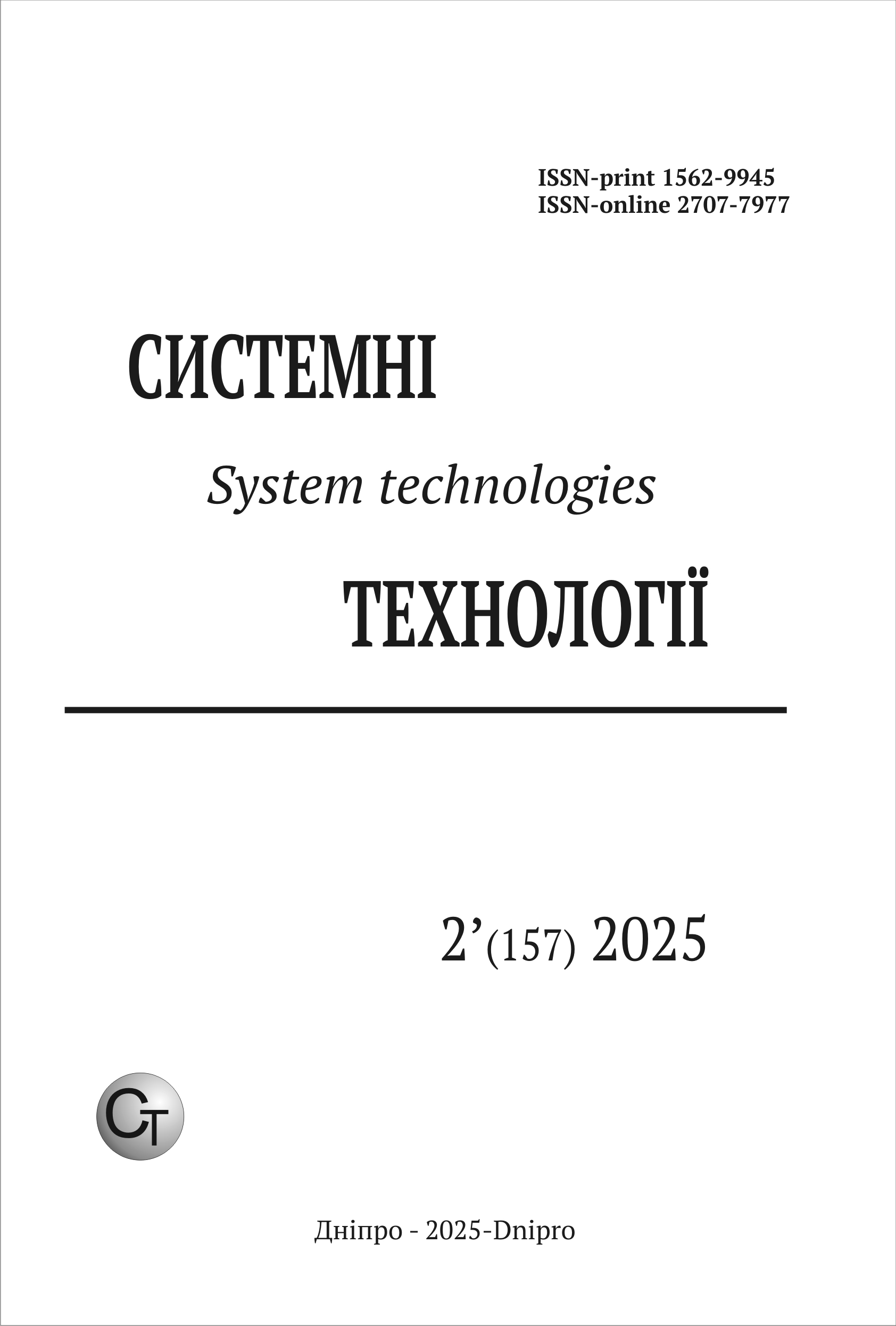Chemical composition influence on mechanical properties of Cu-Al-Si-Sn-Mn system bronze during its solidification in die mold
DOI:
https://doi.org/10.34185/1562-9945-2-157-2025-14Keywords:
Bronze, properties, strength, plasticity, copper, aluminum, silicon, tin, manganese, die mold.Abstract
Chemical composition influence on mechanical properties of Cu-Al-Si-Sn-Mn system bronze during its solidification in die experimental studies results are presented. It has been established that for cast products from the studied bronze, which has been poured into die mold, manufacturing it is necessary to use an alloy in which, wt. %: Al=6.0…7.5; Si=1.0…2.5; Mn=0.21…0.45; Sn=1.0…2.2; inevitable impurities (nn) not more than 0.45; Cu is remainder at the components ratio, which is determined by dimensionless criterion KR, calculated by formula: KR = (1- 0,01•nn)•(Al-Si-Mn)/(1+Sn)2 and which is equal 0.32…0.85. Aluminum bronze with KR = 0.32…0.56 value in cast state (without heat treatment) is multi-phase alloy with following mechanical properties levels: В=423…550 MPa; 0,2 =279…397MPa; 5 =3,2…5,5%; KCU =13…21 J/cm2, which gives reason to classify it as high-strength aluminum bronze with sufficient, as for foundry alloys, plasticity level. This work results using will allow predicting the mechanical properties level of Cu-Al-Si-Sn-Mn system cast aluminum bronze with KR =0.32…0.56 and adapting its properties levels by chemical composition appropriate correction for cast parts manufacturing, taking into ac-count characteristics and their operation conditions in machine tool, instrument, mechanical, shipbuilding and other industries.
References
Gavariev, R. V., & Gavarieva, K. N. (2022). On the Issue of Casting Copper Alloys in Chill Mold. Materials Science Forum, 1052, 313–318. https://doi.org/10.4028/p-0kxodb.
Ayoola, W., Adeosun, S., Sanni, O., & Oyetunji, A. (2012). 2. Effect of casting mould on mechanical properties of 6063 Aluminum alloy. Journal of Engineering Sci-ence and Technology, 7(1), 86 – 96. https://www.researchgate.net/publication/287590221_Effect_of_casting_mould_on_mechanical_properties_of_6063_Aluminum_alloy.
Suthar, J., Persis, J., & Gupta, R. (2021). Critical parameters influencing the quality of metal castings: a systematic literature review. International Journal of Quality & Reliability Management. https://doi.org/10.1108/ijqrm-11-2020-0368.
Hamasaiid, A., Dargusch, M. S., & Dour, G. (2019). The impact of the casting thickness on the interfacial heat transfer and solidification of the casting during permanent mold casting of an A356 alloy. Journal of Manufacturing Processes, 47, 229–237. https://doi.org/10.1016/j.jmapro.2019.09.039.
COPPER CASTING ALLOYS. (1994). New York : Copper Development Association. https://www.copper.org/publications/pub_list/pdf/7014.pdf
Hreshta V.L., Lysytsia O.V., Stepanova L.P (2014). Kolorovi metaly ta splavy na yikh osnovi [Colored metals and alloys based on them]. ZNTU. 286 р.
Uzlov, K. I., Kimstach, T. V., & Repiakh, S I. (2024). Lyvarna koroziinostiika trybo-tekhnichna oloviano-aliuminiieva bronza [Foundry corrosion-resistant tribotechnical tin-aluminum bronze]. Zhurfond. 148 р.
Effect of alloying elements on aluminum bronze - Knowledge. China Titanium Bar Manu-facturers, Titanium Tube Suppliers, Titanium Sheet Factory - GNEE. https://www.chinatialloy.com/info/effect-of-alloying-elements-on-aluminum-bronze-95775396.html.
Callcut V. Aluminum Bronzes - Part I. (2002). New York : Copper Development Associa-tion,. 37 p. URL: https://www.copper.org/publications/newsletters/innovations/2002/08/aluminum1.html.
Uzlov, K. I., Repiakh, S. I., Dziubina, A. V., Mazorchuk, V. F., & Kimstach, T. V. (2021). Sposib vyhotovlennia bronzy muzychnoi [Method of making musical bronze] (Patent Ukrainy № 147278). DP “Ukrainskyi instytut intelektualnoi vlasnosti". https://sis.nipo.gov.ua/uk/search/detail/1590857/.
Lebedyev, A., Kovalchuk, B., Giginjak, F., & Lamashevsky, V. (2000). Handbook of me-chanical properties of structural materials at a complex stress state. Begell House, Ins., Publishers. 500 р.
Obers, S. F. P. M., Overal, J. J., Wong, W. J., & Walters, C. L. (2022). The effect of the yield to tensile strength ratio on stress/strain concentrations around holes in high-strength steels. Marine Structures, 84, 103205. https://doi.org/10.1016/j.marstruc.2022.103205.
Zhang, S.-h., Zhao, D.-w., & Wang, X.-n. (2014). Influence of yield-to-tensile strength ratio (Y/T) on failure assessment of defect-free and corroded X70 steel pipeline. Journal of Central South University, 21(2), 460–465. https://doi.org/10.1007/s11771-014-1960-1.
Register, L. (2020). Rules for the manufacture, testing and certification of materi-als. American Bureau of Shipping. Generic Rules for Classification, Materials and Welding and Survey After Construction. Part, 2.
Wong, W. J., & Walters, C. L. (2021). Failure Modes and Rules Related to the Yield-to-Tensile Strength Ratio in Steel Structures. У ASME 2021 40th International Conference on Ocean, Offshore and Arctic Engineering. American Society of Mechanical Engineers. https://doi.org/10.1115/omae2021-61995.
Downloads
Published
Issue
Section
License
Copyright (c) 2025 System technologies

This work is licensed under a Creative Commons Attribution 4.0 International License.















